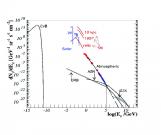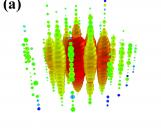Paper of the month: Evidence for High-Energy Extraterrestrial Neutrinos at the IceCube Detector
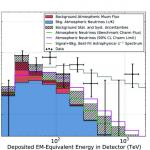
The kilometer-scale detector IceCube at the South Pole - the world’s largest neutrino telescope - has produced the first evidence of high-energy neutrinos of cosmic origin. In particular, they observed 28 high energy neutrinos events with in-detector deposited energies between 30 and 1200 TeV.
arXiv:1311.5238
December 16, 2013 by admin
High-energy astroparticle physics is experiencing an exciting epoch thanks to the development of new detectors which offer unprecedented opportunities to observe the cosmic radiation in the Universe under its different forms. Cosmic accelerators (such as galactic supernova remnants (SNR), active galactic nuclei (AGN), and gamma-ray bursts (GRB)) produce particles with energies even larger than 100 EeV (1020eV). However, we still do not know the mechanism of production in these sources.
In order to shed light on these astrophysical engines and to probe violent processes occurring in our Universe, the multi-messenger approach, based on the synergy between gamma ray, charged cosmic ray (CR) and neutrino observations, represents a winning strategy. Due to the optical thickness of the sources, photons can reveal only the super
cial glow of astrophysical objects. On the other hand, charged CRs provide a direct sight into the inner acceleration processes. However, they are deflected by cosmic magnetic fields on their way to the Earth and so they cannot point back to their source.
Precise pointing astronomy is only possible with electrically neutral, stable particles: in this sense high-energy neutrinos (E>GeV) represent the ideal messenger. Neutrinos are produced in association with the CR beam. CRs (mainly protons and nuclei) accelerated by the astrophysical sources in regions with high magnetic fields, inevitably interact with the surrounding radiation producing charged pions and kaons. These hadrons then decay, emitting neutrinos with energies proportional to the energies of the high-energy primary particles that produced them. Typical high-energy neutrino uxes from cosmic accelerators are shown in Fig. 1.
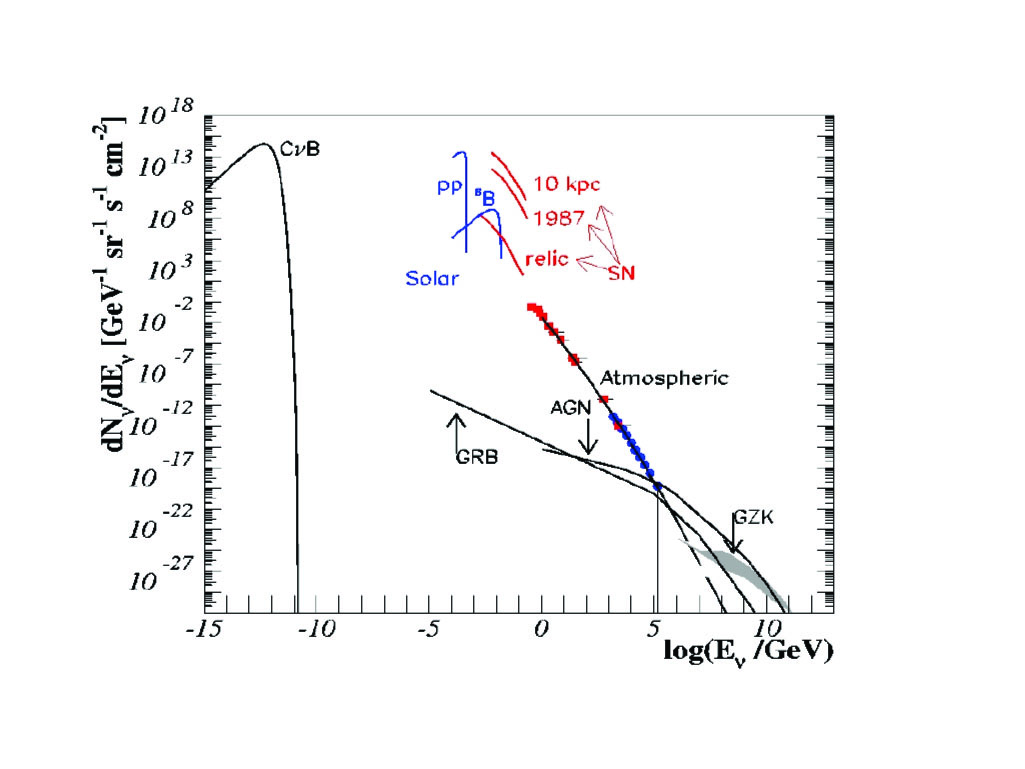
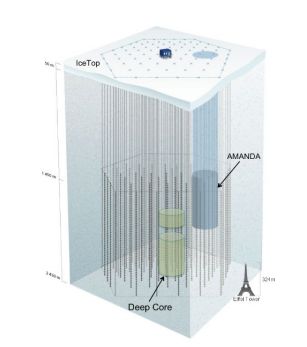
The produced high-energy neutrinos propagate from the deepest regions of the astrophysical engines through magnetic fields and matter, nearly undisturbed. Therefore, they are expected to provide crucial information on astrophysical sources, being sensitive to regions that are opaque to photons and cosmic rays.
Nevertheless, at the same time their weak interactions also make their detection a challenge and so immense particle detectors are required to collect

Figure 1: The cosmic-neutrino spectrum. Sources are the Big Bang (CNB), the Sun, supernovae (SN), atmospheric neutrinos, gamma-ray bursts (GRB), active galactic nuclei (AGN), and cosmogenic (GZK) neutrinos. Figure taken from F. Halzen, arXiv:1311.6350.
cosmic neutrinos in statistically significant numbers. Indeed,the typical estimations of the high-energy neutrino flux produced through the interactions of cosmic rays with the photons of the cosmic microwave background (CMB), or by cosmic accelerators, suggest a statistics of an event per year in a km-scale detector. Therefore, experimental efforts have investigated the possibility of using large volumes of natural material such as water or ice, surrounded with secondary particles emitted by neutrinos through their interactions with the nuclei in the detector. After more than two decades of big efforts devoted to the construction of a kilomenter-scale neutrino detector, IceCube - the world´s largest neutrino telescope - has been completed in the 2010 encompassing a cubic kilometer of ice (see Fig.2).
It is a under-ice particle detector based at the South Pole and designed to detect neutrinos at GeV-PeV energies. It consits of an array of 5160 optical sensor and 86 strings located at depths between 1450 m and 2450 m.
After two year of data taking,the IceCube collaboration has recently produced the first evidence of high-enegy neutinos of cosmic origin. In particular,they observed 28 high energy neutrinos events with in-detector deposited energies between 30 and 1200 TeV (see Fig. 3).
The first hints of the high-energy neutrinos actually came in April 2012 with the discovery of two events above 1000 TeV (1 PeV). The IceCube scientists nicknamed these two rare events "Bart" and "Ernie" (see Fig. 4). An intensified

Figure 2: Schematic view of the km3 IceCube observatory at South Pole for the detection of neutrinos of GeV-PeV energies. The detector is composed of 5160 digital optical modules, each containing a 10-inch photomultiplier, with 60 placed at depths between 1450 and 2450 m on each of 86 vertical strings. IceCube is complemented by a surface air shower array called IceTop, with two tanks located above each of the IceCube strings.

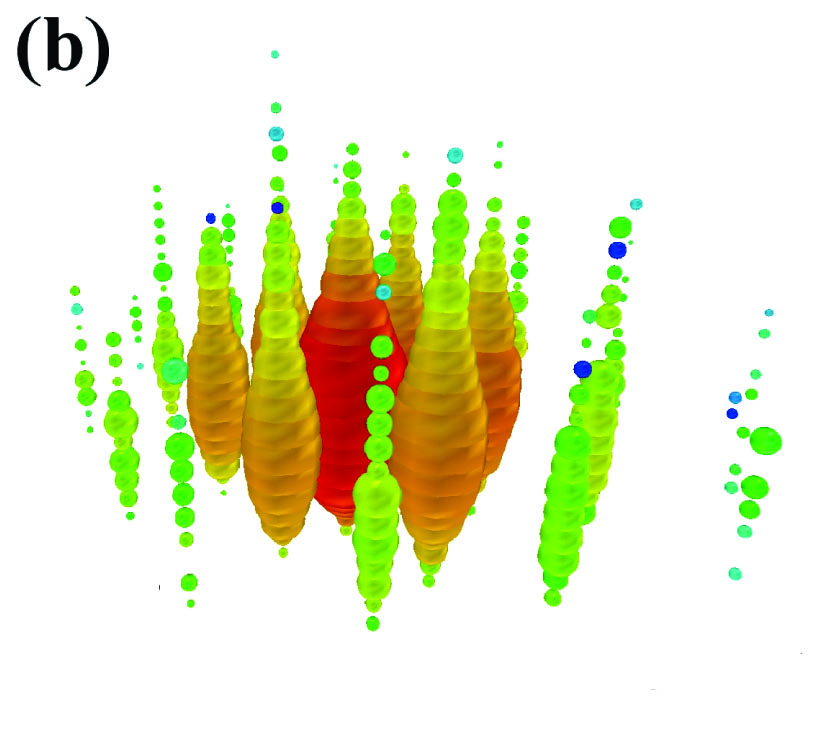
search, turned up 26 additional high-energy events. By now, with the current level of statistics, they do not show any signicant clustering in time or space, i.e. they seem to be consistent with coming uniformly across the sky, although the lack of statistics prevent the identification of their sources so far.
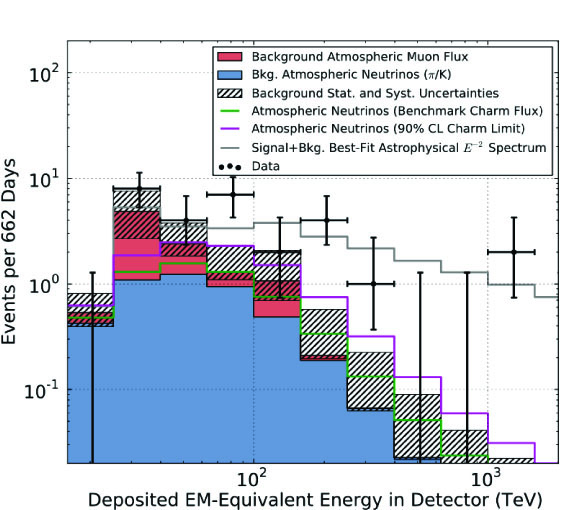
The observation of these high energy particles has rises a big interest in the astroparticle community, aimed at investigating the astrophysical processes able to generate them (among recent papers, we suggest e.g. F. Halzen, arXiv: 1311. 6350; A. Esmaili and P. D. Serpico, arXiv: 1308.1105; R. Laha et al., arXiv: 1306.2309 ). The analysis pursued by the IceCube collaboration has shown that a "conventional" atmospheric origin is very unlikely, since the atmospheric neutrino flux is too low to produce such a number of events (Fig. 3). Another atmospheric source of neutrinos is related to the production of charmed mesons in air showers, which at these energies is harder than the standard one. This flux component in turn dominates the uncertainties in the atmospheric neutrino background, although it seems to be still too soft to explain the data (Fig. 3). High-energy neutrinos could also be cosmogenic, produced when the highest energy cosmic rays collide with photons from the CMB. However, this process would have produced also events at even higher energy, that have not been observed. Therefore, the most likely origin of the 28 events observed by IceCube is

Figure 3: Distributions of the deposited energies of the observed events compared to model predictions. The expected rate of atmospheric neutrinos is shown in blue, with atmospheric muons in red. The grey region represents the background taking into account the statistical and systematic uncertainties. High-energy events resulting from charmed meson production in air showers are shown in green (theoretical prediction) and in magenta (experimental prediction). Finally, the points represent the observed neutrino events. Fig. from arXiv:.1311.5238.


Figure 4: The two observed events "Bart" and "Ernie" from (a) August 2011 and (b) January 2012. Each sphere represents a digital optical module. Colors represent the arrival times of the photons where red indicates early and blue late times. The size of the spheres is a measure for the recorded number of photo-electrons. Fig. from arXiv: 1304.5356.
the astrophysical one, meaning that these neutrinos have been produced directly inside extremely energetic astrophysical objects. Possible candidates for cosmic accelerators are represented by galactic supernova remnants, active galactic nuclei (AGN), and gamma-ray bursts (GRB). Summarising, although it is difficult to substantively constrain the shape and the properties of the neutrino spectrum with the current limited statistic, the provisional conclusion is that the observed neutrinos have properties which are inconsistent with those expected from the muon and neutrinos atmospheric backgrounds. On the contrary, it seems to agree with generic predictions for an additional component of extraterrestrial origin. There is much expectation for new data which will fatten up the statistics and will hopefully allow to disentangle the origin of these neutrinos opening to a new golden era in neutrino astronomy.
Authors: Ninetta Saviano and Valentina De Romeri

